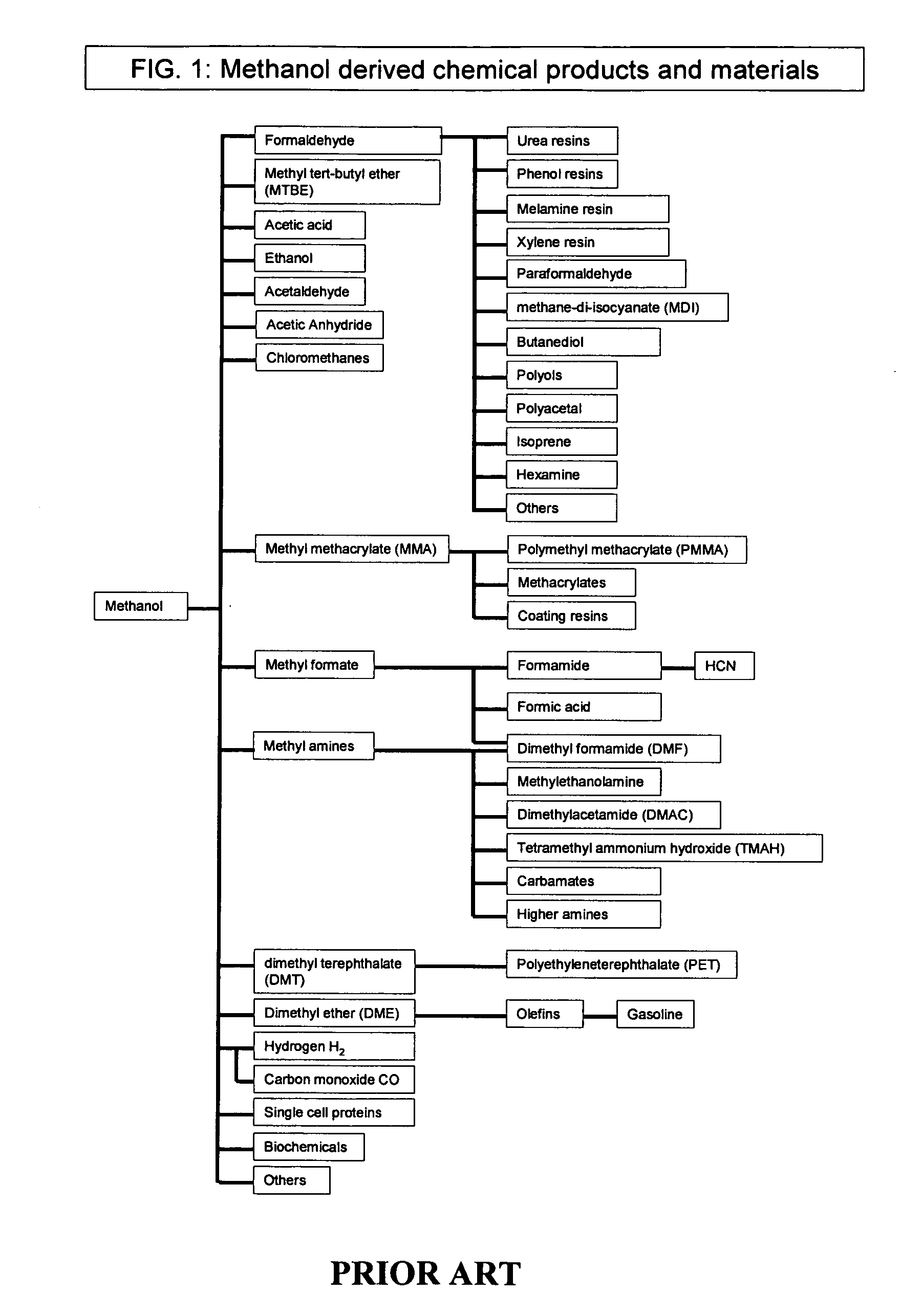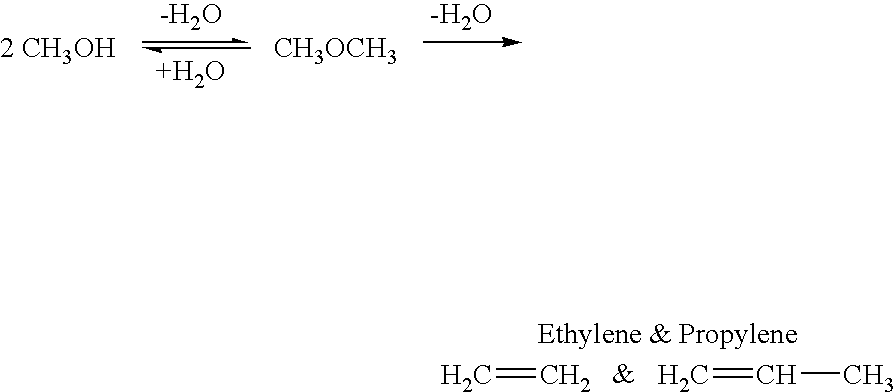Efficient and selective conversion of carbon dioxide to methanol, dimethyl ether and derived products
a technology of dimethyl ether and carbon dioxide, which is applied in the preparation of carbon monoxide and oxygen hydrocarbons, oxygen organic compounds, and oxygen compound purification/separation, etc. it can solve the problems of reducing the efficiency of methanol conversion, so as to reduce the disadvantages or dangers inherent in the process
- Summary
- Abstract
- Description
- Claims
- Application Information
AI Technical Summary
Benefits of technology
Problems solved by technology
Method used
Image
Examples
example 1
[0086] Carbon dioxide is known to be electrochemically reducible to formic acid and formaldehyde in aqueous media over Sn, Pb, In, Zn, Au, Cu, Pd and related electrodes at room temperature in the range of 40-90% current efficiency, while the formation of methanol and methane is significantly low.
[0087] The mixture of formic acid and formaldehyde can be passed over WO3 / Al2O3 in a qartz tube reactor at 190° C. Methanol and methyl formate are then obtained in overall yield of about 40%, while the utilization of formic acid is about 70%. When the reaction of formaldehyde and formic acid in water is carried out at 250° C. in a glass lined reactor, methanol is obtained at a yield of about 60%.
example 2
[0088] Carbon dioxide can be reacted with carbon at elevated temperatures to produce carbon monoxide in the Boudouard reaction. It then can be reacted with methanol to give methyl formate which then can be hydrogenatively converted to produce methanol.
example 3
[0089] The methyl formate obtained by the processes of Examples 1 and 2 is catalytically reduced with molecular hydrogen in the gas phase over copper chromite or nobel metal catalysts at atmospheric pressure in the temperature range of 100-230° C. Selectivity to methanol is>90% and methyl formate conversion is about 85 to 90%. A similar reductive conversion can also be achieved electrochemically.
PUM
| Property | Measurement | Unit |
|---|---|---|
| Percent by volume | aaaaa | aaaaa |
| Density | aaaaa | aaaaa |
| Density | aaaaa | aaaaa |
Abstract
Description
Claims
Application Information
 Login to View More
Login to View More - R&D
- Intellectual Property
- Life Sciences
- Materials
- Tech Scout
- Unparalleled Data Quality
- Higher Quality Content
- 60% Fewer Hallucinations
Browse by: Latest US Patents, China's latest patents, Technical Efficacy Thesaurus, Application Domain, Technology Topic, Popular Technical Reports.
© 2025 PatSnap. All rights reserved.Legal|Privacy policy|Modern Slavery Act Transparency Statement|Sitemap|About US| Contact US: help@patsnap.com



